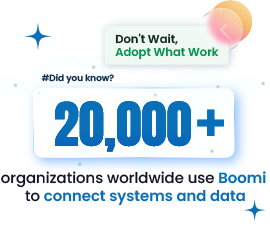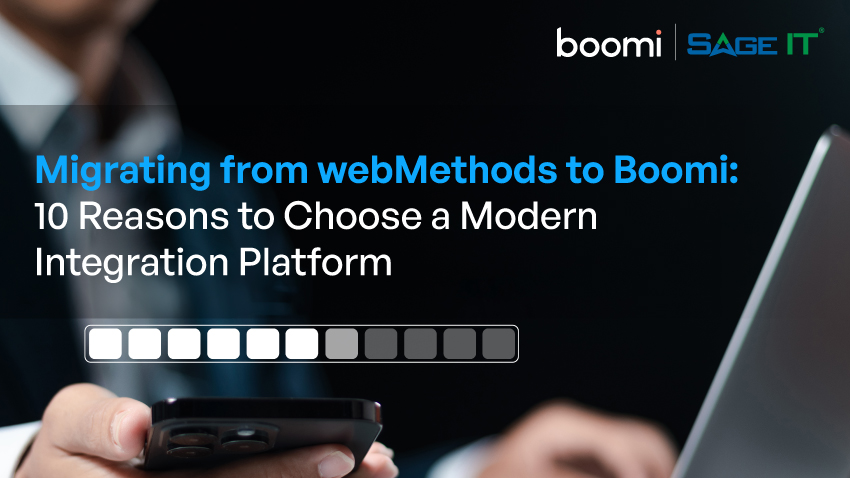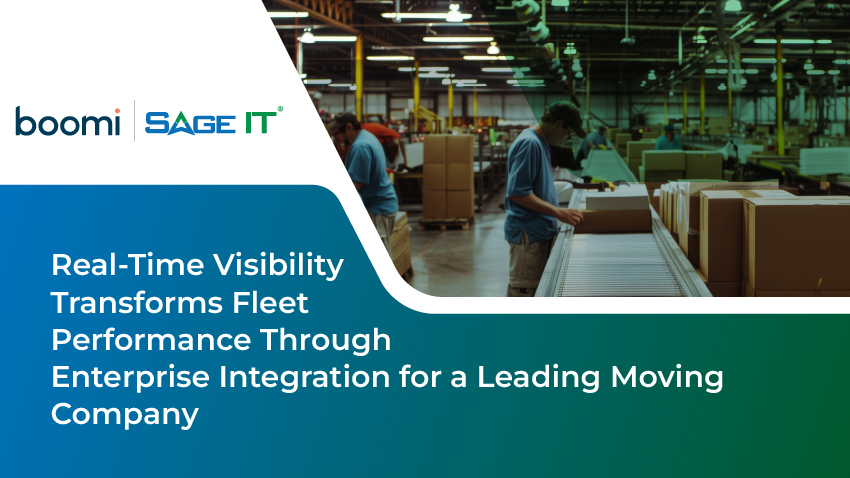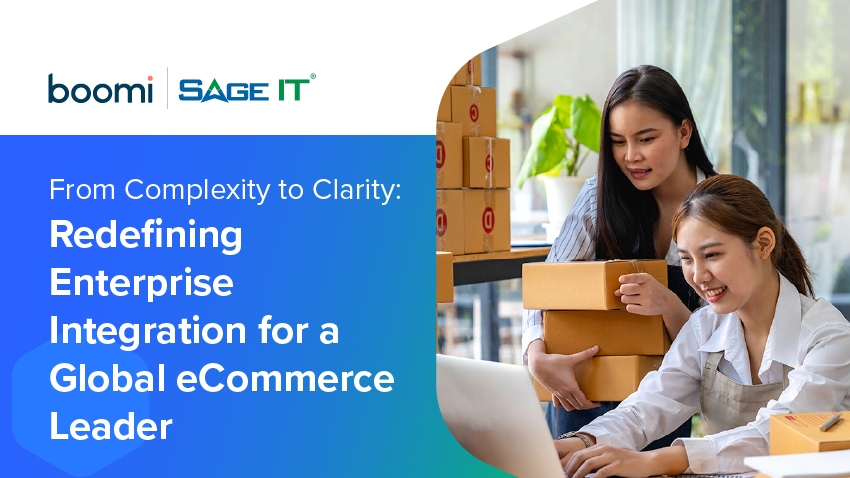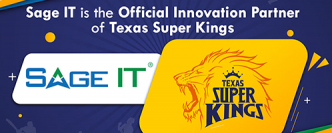“Integration with SAP presents a range of obstacles, from handling large data sets to managing real-time data flows. Businesses often find traditional SAP connectors too rigid, causing unnecessary delays in data processing and increasing dependencies on developer interventions. Addressing these issues head-on, Boomi SAP Connector serves as a solution designed to handle complex SAP environments without the complexity that usually comes with them.
What is Boomi SAP Connector? The Boomi SAP Connector offers support for BAPIs, RFMs, IDocs, and a wide variety of SAP environments, including S/4HANA and R/3 systems. Its architecture shifts away from centralized data management to a more decentralized, load-balanced system that can process high data volumes with ease. With this, businesses gain flexibility without needing specialized technical skills for everyday operations.
How can your enterprise simplify SAP integration without unnecessary technical burdens? Read on to find how Boomi SAP Connector stands apart in solving these integration challenges.
Why Choose Boomi SAP Connector for Enterprise Integration?
Comparison with Traditional SAP Integration Methods
Traditional Centralized Data Handling: Many traditional SAP connectors rely on centralized data management, causing obstacles and rigid data handling processes. This method struggles to keep up with dynamic business demands, slowing down response times and making the system prone to data redundancy. These issues not only affect operational effectiveness but also strain IT resources, requiring constant oversight to manage data flows and prevent disruptions.
Boomi’s Decentralized Data Approach
The Boomi SAP Connector shifts from centralized management, embracing a decentralized approach. This method allocates data processing across various nodes, distributing the load more evenly. The outcome? Reduced latency, improved system resilience, and smoother load balancing. Boomi’s architecture addresses data redundancy by creating multiple pathways for data exchange, minimizing risks of data bottlenecks and allowing enterprises to adapt to fluctuating data volumes with ease.
Core Advantages for Enterprises
Agility in Data Handling
Boomi SAP Connector processes large-scale data transfers across multiple SAP environments. Enterprises can adapt quickly to new data requirements without complex reconfigurations. By supporting a wide range of SAP operations like BAPI, RFM, and IDoc processing, Boomi offers the flexibility to accommodate various integration needs, whether it involves real-time data synchronization or batch processing. This adaptability supports your evolving business requirements and minimizes downtime in data exchanges.
Reduction of Dependencies
Traditional SAP integrations often depend heavily on specialized developers for ongoing adjustments. Boomi’s intuitive interface minimizes this dependency, allowing IT managers to set up and modify integrations without deep SAP-specific expertise. Pre-built connectors and reusable components save time, making the process straightforward. This approach refines operations, reduces the likelihood of errors, and frees up technical resources for other critical projects.
Supported SAP Editions
Boomi SAP Connector extends compatibility across various SAP editions, including S/4HANA, R/3 (4.0 to 4.7), and SAP NetWeaver-based solutions. This wide-ranging support avoids the need to rely on multiple tools for different SAP environments. This versatility gives enterprises the flexibility to use Boomi as a single integration platform, even when working with legacy systems alongside newer SAP versions.
User Interface and Ease of Use
Boomi provides an intuitive, user-friendly interface that eases the configuration process. You won’t need extensive SAP-specific technical knowledge to manage integrations. The graphical mapping tools and drag-and-drop functionality make data transformation more accessible, while real-time monitoring offers transparency into integration processes. This accessibility empowers teams to quickly adapt to changing business needs, minimizing the usual delays seen with complex integration projects.
Setting Up the Boomi SAP Connector
A well-configured Boomi SAP Connector paves the way for smooth data integration. Let’s walk through the setup process step-by-step, covering all the essential elements for a successful integration.
Prerequisites for Integration
Environment Setup: Begin by configuring your Java environment variables. Setting up JAVA_HOME and CLASSPATH correctly is key. The SAP system and Boomi Atom need to operate within the same network for smooth communication. Confirm that firewall settings permit data exchange between Boomi and SAP.
SAP Java Connector Library Files
The integration requires specific library files obtainable from the SAP Support Portal. Obtain the correct SAP Java Connector (JCo) version that matches your system’s OS and hardware. Access to the portal needs an S-user ID, which your SAP administrator can provide. Download the files and prepare them for the configuration process.
Step-by-Step Configuration Process
SAP Connection Setup
Start by setting up the SAP connection within Boomi. Input the user credentials provided by your SAP administrator. Next, include SAP-specific settings such as IDoc TID support. This step is crucial for managing transactional data and avoiding duplication. Select the correct SAP client and gateway host details to establish a connection.
SAP Operation Setup
Define the operations your integration will handle. Boomi supports three main operations:
LISTEN: Used for receiving IDocs. Set this up if the integration focuses on processing inbound data from SAP.
GET: Utilized to retrieve a remote function module. Choose this operation for reading specific data or querying BAPIs.
SEND: For sending data to SAP, such as performing inbound IDoc processing. Configure this based on the type of data and integration logic your business requires.
Atom Configuration:
Download and Place SAP Java Connector Files
Access the SAP Java Connector ZIP file and extract its contents. Place the necessary files (sapjco3.jar and platform-specific files) into the Boomi Atom’s userlib/sapjco directory. If the directory doesn’t exist, create it first.
Platform-Specific Steps
Windows: Place sapjco3.dll and sapjco3.jar in the userlib/sapjco folder.
Linux: Place libsapjco3.so and sapjco3.jar in the same directory.
Restart the Boomi Atom to apply changes. Confirm that the Atom connects to the network supporting the SAP ports used for communication.
Testing the Connection
Test Scenarios: Conduct initial tests to validate the setup:
Perform an IDoc retrieval test to confirm that the Boomi connector listens and processes incoming IDocs accurately.
Execute a BAPI query to check that the connector retrieves data as expected. This step verifies that the connection settings align with SAP’s requirements.
Troubleshooting Tips
Connection Timeouts: Check network configurations and firewall settings if the connection faces timeouts. Adjust the connector’s timeout parameters to allow more flexibility in slower networks.
Authentication Errors: Double-check user credentials and confirm the SAP user has the necessary permissions for the integration tasks. Misconfigured roles or access rights can cause authentication failures.
Managing IDocs with Boomi SAP Connector
Integrating IDocs into SAP workflows often brings complexity, but with Boomi SAP Connector, you have a clear way to manage, configure, and monitor these data transactions.
Understanding IDoc Integration:
- What are IDocs?: In SAP, an IDoc (Intermediate Document) serves as a data container for exchanging information between SAP and external systems. Each IDoc follows a specific format, carrying structured data that businesses use for various functions like order processing, inventory management, and invoicing. In simple terms, IDocs act as the language SAP systems use to communicate smoothly with other applications.
- Boomi’s Role in IDoc Management: The Boomi SAP Connector takes charge of managing the transmission and processing of IDocs, providing an intuitive interface for sending, receiving, and monitoring data flows. It supports asynchronous communication, allowing systems to handle large volumes of data without interference. By using Boomi, you can map IDoc structures, generate profiles automatically, and use pre-built functionalities to speed up integration tasks while minimizing manual intervention.
Setting Up IDoc Processing:
- Configuring the Connector for IDoc Operations: Begin by configuring the Boomi SAP Connector to align with your IDoc processing needs. You will need to set up a connection to your SAP system, then define the operation to either send or receive IDocs. Specify the IDoc type and segment profiles during this step, confirming that the correct data structure matches your business requirements. With Boomi’s drag-and-drop interface, the setup becomes straightforward, reducing the usual technical hurdles of manual configuration.
- Handling IDoc Extensions: In some cases, the standard IDoc formats do not meet your specific requirements. Boomi allows for the customization of IDocs through extensions, adding extra fields as needed. Use the Boomi platform to define these fields within the IDoc segments, aligning them with your unique data processing needs. This ability opens up flexible ways to adjust IDoc transactions without extensive SAP-side customization.
Database Management for IDocs:
- TID Database Management: Each IDoc transaction uses a unique TID (Transaction ID) for tracking and maintaining message integrity. Boomi manages these TIDs by storing them in a dedicated database. Proper management of this TID database is crucial to avoid performance issues over time. Best practice includes periodic purging of TIDs marked as “Confirmed” to keep the database size manageable. The Boomi platform provides built-in tools to assist with this maintenance, helping you handle IDoc transactions efficiently and keep the system running smoothly.
- Security Aspects: Managing IDocs involves handling sensitive business data, and Boomi focuses on data integrity during these processes. Boomi’s platform uses secure protocols for IDoc transmission, applying encryption and validation to protect data during exchange. When storing TIDs within Boomi, access controls can be set to restrict database operations, confirming that only authorized personnel manage these IDoc processes.
Features of Boomi SAP Connector
The Boomi SAP Connector brings several advanced features designed to handle complex integrations. This overview highlights key functionalities that address common challenges in SAP integration.
Connecting via BAPIs and RFMs:
- SAP Java Connector Library: Boomi uses the SAP Java Connector library to access BAPIs (Business Application Programming Interfaces) and RFMs (Remote Function Modules) within your SAP environment. This method grants access to a variety of SAP functions, facilitating the retrieval and exchange of vital data. Boomi’s integration with the library supports different data processes, offering flexibility in connecting various SAP modules without deep technical knowledge.
- Utilizing Business Object Repository: The connector allows users to pinpoint BAPIs using specific business objects or wildcard searches through the Business Object Repository. This approach helps identify exact data sets within SAP, reducing time spent on integration configurations. By focusing searches, it becomes easier to pull precise information, minimizing errors in data mapping and maintaining smooth data exchange.
Custom Data Transformation
- Data Mapping and Transformation: Boomi’s graphical data mapping tools make the process of aligning SAP data with other systems more manageable. The connector can handle various data formats, such as XML, JSON, and flat files. For example, you can configure mappings to convert SAP-specific data structures into the desired output format of the target system, reducing manual data processing efforts and making data more usable across different platforms.
- Integrating Custom Fields: The Boomi SAP Connector provides tracked properties like IDoc Number and Message Code, which allow for customization in data mapping and integration processes. These properties enable you to define how data fields should interact, whether creating unique identifiers or matching specific business conditions. This feature gives you control over data routing and handling, fitting each integration into your organization’s unique workflows.
Security and Data Handling
- Secure Communication: Boomi facilitates secure data exchanges through encrypted connections and user credential management. It supports protocols like HTTPS and FTPS, maintaining data confidentiality during transfer. You can configure user authentication and role-based access controls to manage who can initiate or monitor integrations, providing an additional layer of security in data-sensitive environments.
- Monitoring and Alerts: Boomi includes real-time monitoring tools that keep track of all data exchanges. With its alerting system, you get notified of any integration issues, such as failed transactions or unexpected delays. This proactive monitoring helps identify problems quickly, reducing downtime and maintaining the integrity of critical business processes.
Best Practices for Boomi SAP Connector Integration
Integration can present unique challenges, but these best practices will help smooth the process and guide you in maximizing the potential of the Boomi SAP Connector.
Pre-Integration Setup:
- SAP Environment Preparation: Before starting, configure Logical Systems, Distribution Models, and Partner Profiles within SAP. These configurations define the data flow between SAP and Boomi, dictating how data gets exchanged and processed. Correct setup here prevents common errors during integration and supports a structured communication channel for data exchange.
- Network Placement: Position the Boomi Atom within the SAP network to boost data processing speeds and minimize latency. This placement also secures data exchanges, as Boomi and SAP interact within a controlled network environment. The closer proximity to the SAP environment supports smoother data transfer and better overall integration performance.
Effective Data Mapping:
- Defining Data Flow: Boomi’s graphical mapping tools make the creation of data transformation paths between SAP and other systems more straightforward. Outline the exact data points needed for integration and use the drag-and-drop functionality to define these pathways. This method provides transparency in data flow, helping you keep track of data movements and conversions across systems.
- Reusable Components: Use Boomi’s reusable components, like process libraries, to facilitate future changes. By building modular components, adjustments to integrations become more manageable and less time-intensive, avoiding disruptions in ongoing operations. This approach makes ongoing integration management easier and reduces the need for constant developer involvement.
Error Handling:
- Automated Error Resolution: Configure automated retries and notifications within Boomi to address common integration errors. By setting conditions that trigger these retries, you cut down on manual intervention and maintain data accuracy. For example, set up the connector to automatically retry an operation when an IDoc fails due to network issues, while sending alerts to the support team.
- Error Log Analysis: Boomi’s error tracking provides insight into where and why issues occur. Regularly review error logs and set up alerts for unusual patterns. Use this analysis to make necessary adjustments to processes, such as mapping corrections or modifying data flows, ultimately minimizing the risk of repeated failures.
Ongoing Monitoring and Maintenance:
- TID Database Management: Regularly purge the Transactional ID (TID) database within the Boomi environment to prevent unnecessary data accumulation. A well-maintained database avoids performance lags and keeps the integration running smoothly. Schedule periodic clean-ups to remove ‘Confirmed’ status entries that no longer serve an operational purpose.
- Load Balancing: Boomi supports data distribution across multiple SAP modules, which helps manage large volumes of data. Break down data loads into smaller segments and distribute them to different SAP nodes to prevent system overloads. This balancing act maintains steady processing rates, ensuring that no single SAP module becomes a hindrance.
Get Support from Boomi Integration Experts:
Certain processes, such as setting up SAP components like Logical Systems, Distribution Models, and Partner Profiles, along with configuring advanced network placement for Boomi Atom within your SAP network, require specific expertise to achieve optimal performance and reliability. These steps demand a deep understanding of both SAP architecture and Boomi’s features to prevent errors and maintain smooth operations.
Hiring our Boomi integration experts will provide you with tailored assistance—from setup to troubleshooting and beyond. For enterprises seeking long-term performance and reliability, Boomi environment management by Sage IT ensures 24/7 oversight, incident prevention, and platform optimization. Our specialists not only guide your initial configuration but also deliver continuous support, advanced error handling, and performance fine-tuning to make your Boomi SAP Connector integration truly scalable.
Real-World Applications and Use Cases of Boomi SAP Connector
Data Migration to S/4HANA:
- Example: A multinational retailer needed to migrate data from its legacy SAP R/3 system to S/4HANA. With multiple data sources and formats, the process required a reliable integration tool. Boomi’s SAP Connector provided the necessary flexibility to map and transfer data across diverse systems.
- Challenges Addressed: Boomi handled large-scale data transfers while maintaining data integrity and security. By enabling real-time monitoring, it allowed IT teams to identify and address potential errors during migration. This seamless process reduced downtime and avoided disruption in business operations.
Automated Order Processing:
- Example: A manufacturing company integrated its CRM with SAP using Boomi’s SAP Connector. This integration allowed real-time exchange of customer orders, inventory status, and pricing information between systems, providing the sales team with up-to-date data.
- Benefits Realized: The automation reduced manual order entry, minimizing errors and speeding up order fulfillment. With immediate data access, the sales team made informed decisions on inventory availability and delivery timelines, which boosted customer satisfaction and improved overall sales performance.
Financial Data Synchronization:
- Example: An organization struggled with delays in financial reporting due to data discrepancies between its SAP system and external analytics tools. By incorporating Boomi’s SAP Connector, the company synchronized financial data across platforms, including profit and loss statements, cash flows, and balance sheets.
- Impact on Reporting Accuracy: With automated synchronization, the finance department gained access to real-time data for reporting and forecasting. This integration provided a single source of truth, reducing the risk of errors and delivering reliable insights for strategic decision-making.
Conclusion
The Boomi SAP Connector provides more than just a technical solution—it creates a path to smooth integration between your SAP systems and other business applications. By removing rigid workflows, it gives your teams the ability to make informed decisions without complex technical barriers. Whether you’re managing high-volume transactions or diverse datasets, Boomi makes the entire process easier, letting your organization focus on growth instead of integration challenges.
Ready to elevate your SAP integration strategy? Contact our Boomi integration experts for a personalized consultation. Let’s see how this solution can transform your business, boost performance, and give your teams the flexibility to thrive without restrictions. Your journey starts here—reach out to us and begin your integration transformation now.

